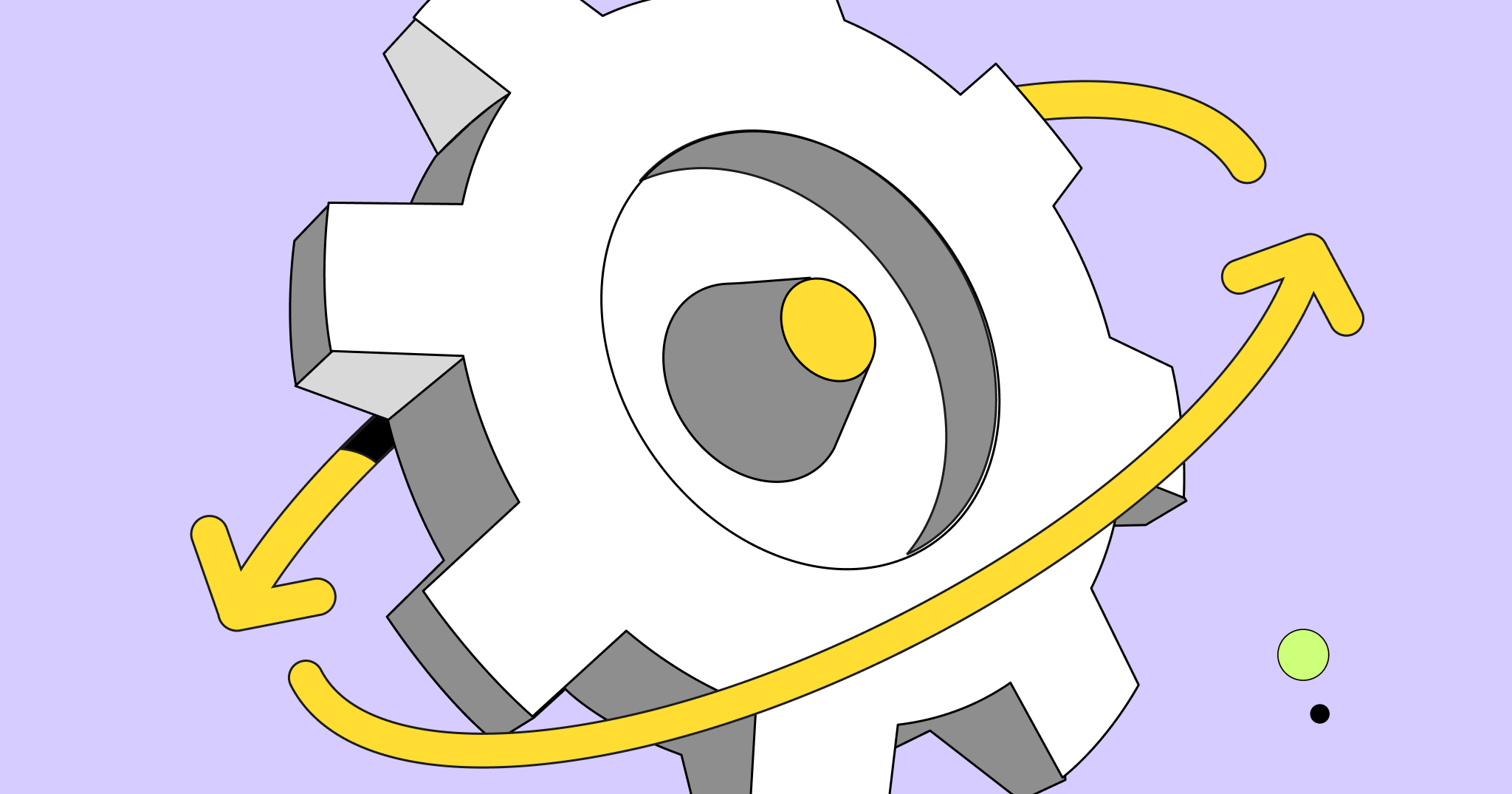Looking for a way to streamline the growth of your business?
A gap analysis could be just what you need.
When used correctly, a gap analysis helps you elevate your business from where it is now to where you want it to be. It allows you to identify the quickest and most efficient way to reach your goals.
In this article, we’re outlining what a gap analysis is, the benefits of using it, and some of the drawbacks you should be aware of, too. We’ll also talk you through how to perform a gap analysis for your business.
Try Miro’s Gap Analysis Templates
What is a gap analysis?
A gap analysis compares actual performance with desired performance. As a result, businesses can determine the most efficient and effective ways to reach their goals.
There are various situations where a gap analysis is helpful. It forecasts and predicts profits, identifies new sales and marketing opportunities, and reveals areas of improvement in your processes.
There are four main types of gap analyses that businesses can use, which we’ll cover in detail later. But no matter what type, the end goal remains the same: to find out how you can move from where you are now to where you want to be.

How do you structure a gap analysis?
A gap analysis template is an outline used by businesses to structure their investigation. It should outline your current state, desired state, the gaps, and how you plan to close them.
Take a look at our template as an example:

The template contains all four major columns, with each row assigned to a different goal. Businesses can use this template to outline their plan to close the gaps and reach their desired state.
After using this template to complete a gap analysis, you might want to conduct a SWOT analysis to identify broader strengths and opportunities, too. This will give you a well-rounded picture of how to successfully grow your business.
What are the types of a gap analysis?
There are four main types of gap analyses. These include:
- Performance
- Product
- HR
- Profit
Let’s look at each of these in more detail.
Performance gap analysis
A performance gap analysis measures employee and company performance in comparison to expected performance. Sometimes called strategy gap analysis, it’s the most popular version of gap analysis.
How does performance gap analysis work?
Businesses measure their performance against competitors in the marketplace and in line with established benchmarks and industry standards. Using this information, companies can predict what acceptable performance should be and identify any gaps and areas of improvement.
When should you use performance gap analysis?
A performance gap analysis should be used if you want to improve your internal processes and employee performance.
Let’s say your sales team isn’t reaching its targets. You could use performance gap analysis to figure out why this is and identify a plan of action to get sales back on track.
Whether that’s training your employees, hiring more employees in new roles, or changing existing job responsibilities, the gap analysis will show you how to get from where you are now to where you want to be.
Product gap analysis
Also known as a market gap analysis, a product gap analysis measures areas where demand is greater than supply. In other words, it helps you identify under-serviced markets. With this information, you can expand your product line to a new audience to meet customer demand.
Unlike market research, this approach is proactive instead of reactive. Businesses seek out areas of demand rather than waiting for feedback from consumers.
How does a product gap analysis work?
You’d start by investigating new markets where your service might be in demand, such as new locations or demographics.
You could also think about launching into new service areas. This would mean offering an altered version of your existing product or service to provide something new for your consumers. Uber launching Uber Eats is a good example.
They started as a modern taxi service, and they launched a food delivery service off the back of it.
Once you’ve identified demand for your product in a new market, you can use the analysis to figure out how to get from point A to point B.
When should you use a product gap analysis?
If you’re looking to expand your business but don’t have the time or budget to create a new product or service, a product gap analysis could be just what you need. It helps you find new markets for your existing product so that you can grow your business without having to invest a lot of money upfront.
If you’re a new business, product gap analysis is also a great way to make sure you’re not entering an overly-saturated market.
HR gap analysis
An HR gap analysis measures your current workforce in relation to the amount of work required. It analyzes the capacity and size of a team to make informed decisions about budgeting and staffing.
It’s sometimes called a skills gap analysis or workforce gap analysis.
How does an HR gap analysis work?
You start by outlining your goals. When these are clear, you can analyze the key skills employees need to help the business achieve these goals. Then, you turn your attention to your workforce.
You’ll review their professional skills and their workload, making a note of their experience level in each key skill. By the end of the process, you should be able to identify how and where you can fill in the gaps and help the organization reach its goals. Whether that’s investing in training or restructuring your workforce, you’ll have a clearer picture of what to do next.
You also might consider creating an organizational chart to help with this process. This will make it clear who’s on the team and the role they uphold.

You can use the above template if you want to create an intuitive and shareable chart in a matter of minutes.
When should you use an HR gap analysis?
If you’re concerned that your current workforce can’t hit the goals you want to reach, an HR gap analysis could be helpful. It’ll clearly outline your current team’s skill sets and capacity, allowing you to fill the gaps and help the company succeed.
Profit gap analysis
A Profit gap analysis measures your actual profit alongside your target profit. It shows businesses why their forecasts haven’t been met, what went wrong along the way, and what they can do differently going forward.
How does a profit gap analysis work?
When conducting a profit gap analysis, you’ll review your target profit and your actual profit. By doing so, you’ll be able to pinpoint areas where your business didn’t reach the targets you set and why they weren’t reached.
Was your budget unrealistic? Did you have to lower prices because of your competition? Did your product not sell as well as you’d hoped?
Whatever the issue, the gap analysis will bring it to light. As a result, you can make the appropriate adjustments for the future.
When should you use a profit gap analysis?
There’s a lot to consider when it comes to profit. Market trends are constantly changing, and macro factors are out of your control.
All of these elements have an impact on the financial success of your business. But this is where profit gap analysis can help.
If you have specific revenue or profit goals for the future, or if you haven’t been able to hit financial goals in the past, a profit gap analysis is for you. It’ll break down your finances and allow you to easily find areas of improvement.
What are the benefits of a gap analysis?
We already know that a gap analysis helps businesses get from where they are now to where they want to be.
But are there any other benefits?
In short, yes. Depending on the type of gap analysis you use, there are multiple ways a gap analysis will benefit your business.
Let’s take a look at some of the main benefits.
Get a unique insight into how your company operates
Conducting a gap analysis gives you an in-depth perception of how your business operates. It shows you how your company processes work, what resources you have, and where your shortcomings are. It outlines all the key aspects of your business in one location.
You also get a better understanding of how your business performs in the marketplace in relation to your competitors.
All of this information offers a deeper understanding of your business — an understanding that you might not have been aware of had you not conducted the analysis.
With this information, you can make informed decisions about how your business operates and its areas of growth and opportunity.
Align your company strategy
No matter which gap analysis you perform, you always have an end goal in mind — a goal that feeds into your company strategy. This means that when you do your analysis, you’re also making sure that your business activity aligns with your strategy.
Alignment is a pretty key part of business growth. If your activities aren’t aligned with your strategy, you risk losing direction and never reaching your desired state.
But with a gap analysis, you make sure that everything your company does is aligned with your strategy. It also gives you a clear perspective of what your company strategy should be and how you’re going to achieve it.
Proactively fix problems
Gap analysis helps you find areas of improvement in your workflow. This means you can get ahead and make changes before the problems get worse.
Think about your website content as an example.
With a content gap analysis, you identify the areas of improvement for the existing content across your website. As a result, you can make the necessary changes to improve your content strategy going forward.
But if you hadn’t performed the analysis, who knows when you would have noticed these areas of improvement?
And that’s why using the analysis is a good thing. It allows you to be proactive about your problems and put things right.
Increase efficiency
A gap analysis helps you find areas of improvement in your current business processes. And when you improve your processes, your entire business becomes more efficient.
Think about it. If your processes are streamlined, you spend less time working on tasks that aren’t necessary and more time achieving company goals.
Improved processes also mean that you can get more done with fewer resources, allowing you to focus your efforts on other areas of the business.
Are there any limitations to using gap analysis?
Although there are benefits to using gap analysis, there are some drawbacks to be aware of.
Not enough detail
A gap analysis is great for a lot of things, but it doesn’t cover everything you need to know.
For example, you can’t do a competitor analysis within the existing framework. If you want detailed information about your competitors, you’d have to do a separate competitor analysis and integrate the information.
Because of this limitation, it also means that you might not get to the root of your problem with just a gap analysis. Chances are, you’d need some other framework or model to get into the nitty-gritty of your problem.
Simply put, you can’t do everything with a gap analysis. You’ll need other frameworks to bulk out the details and analyze other areas of your business. It’s not the end of the world, but it does impact the efficiency and effectiveness of gap analysis, so keep this in mind.
The process could be time-consuming and costly
Part of the gap analysis process involves creating solutions to get you from your current state to your desired state.
But what happens if you don’t have the time or money to perform a gap analysis in the first place?
For some businesses, doing the gap analysis in the first place requires additional time and money that simply isn’t available. There’s also a chance that the solutions you find might be costly. And if your budget won’t stretch, you’ll probably have to compromise on your solution.
If that’s the case, was the gap analysis worth it in the first place?
This is something to think about ahead of doing the analysis. Take stock of your resources, and see what time you can realistically spend on the analysis and what your budget is for the analysis and the solutions you create.
How do you perform a gap analysis?
Performing a gap analysis varies from business to business. But there are some steps you should follow to make sure you get the most out of your analysis.
1. Analyze your current state
First things first, you need to pinpoint your current state. This will be your baseline to figure out how to get from where you are now to where you want to be.
So spend some time reviewing your current situation. Take a look at your position in the marketplace, review your competitors, and analyze anything else that’ll tell you how your business is performing. This will help you identify areas of improvement.
We’ve got existing templates that’ll help you review this information as quickly as possible. Take a look at our Executive Summary Template as an example.

By the end of this process, you’ll understand the reality of how your business is performing in the marketplace. You’ll also have a better idea of what your strategic goals should be and how to achieve them, which leads us nicely to the next step.
2. Outline your business goals
Now that you have a clear picture of your current performance, it’s time to think about the future. More specifically, about your business goals.
Ask yourself this: If everything went to plan, where would your business be?
By establishing the goals that you want to achieve, you can start to identify the improvements needed to reach them. In other words, you start to identify gaps.
So spend some time outlining what your goals are. This is the foundation you need to envision your future state in comparison to your current reality.
When creating your goals, make sure they’re realistic. If they’re not, a gap analysis won’t help, as you’ll never reach your goals.
That’s why we’d suggest creating SMART goals. This will guarantee that your goals are achievable and measurable, among other things. Take a look at our SMART Goals Templates for more information about the framework and how to use it.

This template can also be altered and customized based on the information you want to find. You can change the text, add shapes, and add visual notes.
3. Compare what you have with what you want to achieve
Throughout the previous two steps, you’ve outlined your current and desired states. Now, it’s time to compare the two and perform your gap analysis.
This involves figuring out how far you are from your target state and how to get there. You need to find the gaps, think about how you can fix them, and make sure you don’t make the same mistakes in the future.
This is where using a ready-made template can help. With the right template, you can view your current and desired states in one location. This makes it easier for you to visualize how to fill the gaps and reach your goals.
If you’re spread too thin across various platforms, it’ll be harder for you to plot areas of improvement.
Don’t forget — we have a ready-made Gap Analysis Template that you can use. And we’ve got a range of tools and features that allow you to customize it however you like.
4. Create a strategic plan of action
You’ve done the work and identified how to get from your current state to your desired state. What next?
You need to put all the information into your gap analysis. This will serve as your plan of action going forward.
You also might need to create separate plans for specific parts of the gap analysis. For example, let’s say one of your actions from the gap analysis is to improve the online user experience.
This isn’t an overnight job, and it requires a lot of planning to figure out the logistics. You need a detailed plan with timelines, deliverables, and delegation of responsibilities. Our Workflow Template and Action Plan Template are good examples.

So when your gap analysis is complete, think about creating separate plans to manage each stage of the journey. This extra layer of planning and detail will make sure everyone on the team knows what they’re doing and how they’re going to do it.
Start your gap analysis today with Miro
So there you have it — a simple guide to gap analysis. You know the different types of gap analyses, the steps you need to take to perform them, and which platform you can use to create the template (that’s us).
There are a lot of gap analysis tools out there to choose from. With Miro, performing a gap analysis and sharing it with your team is easy. Using our simple whiteboard tool, you can adapt our existing template for any industry. You can also create your own template from scratch or customize existing templates with our additional features.



